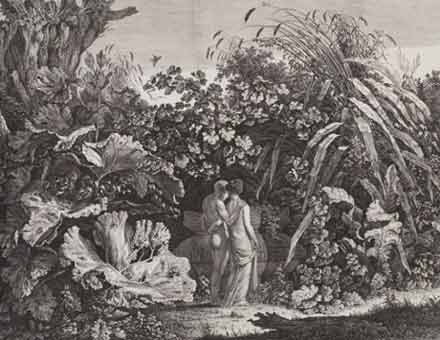German Romantic prints and drawings from an English private collection, at the British Museum.
For much of the late eighteenth and early nineteenth centuries – the age of Romanticism, as it has come to be known – Germany was a troubled and fractured place. Not yet a nation, but seething with aspirations to become one, its territories had long been a battleground for the great powers of Europe. The Napoleonic invasions of the early nineteenth century only enhanced many Germans’ sense of their own political impotence, leading Jean Paul Richter to declare that “Providence has given to the French the empire of the land; to the English that of the sea; to the Germans – that of the air!” What he meant was that while Germans could not hope for power in the real world, they were born for mastery in the airy vastness of the intellectual universe – the sphere of literature, philosophy, music and art.
Richter was right: Germany did indeed experience a great cultural awakening during the Romantic period. But while the writings of Goethe, the philosophy of Kant and the music of Beethoven are globally appreciated, the work created by German visual artists of the time still remains relatively undervalued outside Germany itself. A new free exhibition in the British Museum’s Prints and Drawings department focusses on one, particularly powerful strand of German Romantic art. “Landscape, heroes and folktales: German Romantic Prints and Drawings” is a broadranging survey of graphic art in Germany from the end of the eighteenth century until (roughly) the mid-1860s. Remarkably, it is entirely drawn from the holdings of a single, extremely discerning, English private collector, Charles Booth-Clibborn. On this showing, if his collection could be kept together and perhaps, one day, find a permanent home here, it would transform the representation...


